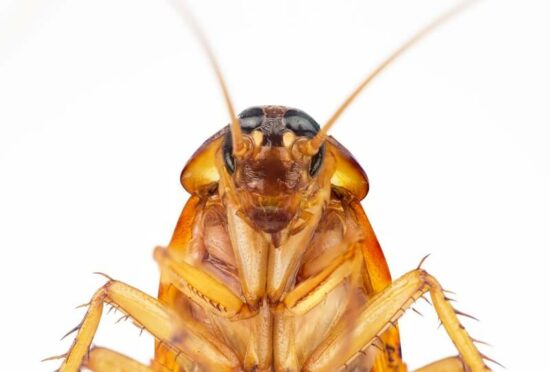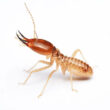Cockroaches are an intimidating pest that many homeowners don’t know much about. The one thing that everyone seems to agree on is that these insects are quite tough to kill!
But can roaches survive in the cold?
This guide will teach you if roaches can survive in the cold and winter, what temperature kills them, and how cold weather impacts their behavior.
Table of Contents
Can Roaches Survive In The Cold?
There’s a reason why cockroaches have survived millions of years on this planet. They’re surprisingly resilient and adaptable. But of course, these pests aren’t indestructible.
Roaches can survive in the cold, but there are limits.
These bugs prefer temperatures around 77 to 86 degrees Fahrenheit. They’re tropical insects and thrive in warm, humid environments. In this range, they reproduce quickly and are the most active.
However, they can also survive beyond that temperature range. Entomologists believe they can survive temperatures as high as 115 degrees Fahrenheit. But what about the cold?
As winter weather rolls around, roaches must jump into action to survive. You see, cockroaches are cold-blooded insects. That cold-blooded nature allows them to conserve energy and go without sustenance for a month. But it also requires them to thermoregulate.
Without heat, they cannot survive.
As temperatures dip, roaches look for places to hole up during the winter. That’s the only way they can survive freezing temperatures. In areas that don’t experience harsh winters, cockroaches can remain active throughout the year. But in places with cold winters, they must find shelter and acclimate.
While you might not see them, roaches are still around during the winter. They can survive in the cold as long as there are places to find residual warmth, food, and water.
How Cold Does It Have To Be For Them To Die?
Did you know that cockroach species exist on every single continent but Antarctica? The harsh winters and the lack of warm hiding spaces makes the coldest continent the least inhabitable for these bugs.
That should give you an idea of how cold it needs to be for these resilient pests to die off.
There’s no exact number, but entomologists say that the danger zone is around 0 degrees Fahrenheit. That’s about -17 degrees Celsius.
At that point, the roach will likely die in the cold unless it finds shelter. Their metabolic processes slow down, and the bug dies a pretty slow death. By -10 degrees Fahrenheit, death is all but guaranteed.
The interesting thing about how roaches survive in the winter is that they need time to acclimate. Technically speaking, these bugs will die off as the temperature drops to 0 degrees. However, they could die sooner if they don’t have the chance to acclimate in time.
For example, sudden cold snaps that take the roaches close to the danger zone might be enough to kill them off even if the temperature doesn’t dip below 0 degrees. It all depends on how quickly the ambient air cools down.
Long before the roaches get to that death zone temperature, they’ll feel the effects of the cold. At around 45 to 40 degrees Fahrenheit (4 to 7 degrees Celsius), the chances of survival wane. Long-term exposure to temperatures below 40 degrees is enough to kill the bugs.
At the very least, they get weak. At 40 degrees, cockroaches lose their ability to reproduce, so the survival of a colony is at risk.
How Long Can Cockroaches Live In The Cold?
How long a roach can live in cold weather depends entirely on where they are and how much exposure they have to the cooler temperatures. Remember that it’s all about finding a warm spot and acclimating to the weather change.
As winter approaches, these pests know that their time out in the open is limited. They go into survival mode and look for places to keep warm as they wait out the cold weather. Generally, suitable spots include crevices, vacant spaces in walls, and anywhere else that’s sheltered.
Once they get to a suitable spot, they go into a form of hibernation. It’s diapause, and many entomologists liken it to a plant going dormant.
When they go into the diapause state, the bug’s metabolic rate slows down. Those life-supporting processes are still occurring, but it’s at a much slower pace to conserve energy. No matter the bug’s life stage, growth comes to a grinding halt.
The roach does everything it can to conserve energy so it can survive in the cold. Most bugs won’t move an inch unless they have to. They save that energy for those instances when they must find food or water. However, that doesn’t occur very often, thanks to their ability to go without food for a month.
So, what about a roach that doesn’t find shelter or goes into a state of pseudo-hibernation? Those roaches live on borrowed time!
How long they last depends entirely on how quickly the temperature drops. At around 40 degrees Fahrenheit, the chances of them dying after about 10 hours is incredibly high. Anything lower than that and it could take a few hours!
Expert Tip: If you were to lock a roach in a container and pop them in the freezer, the sudden temperature drop would be too much to handle. The bug wouldn’t be able to acclimate in time before its body shut down. In that situation, it would only take an hour or two for the roach to die.
Do Roaches Die In The Winter?
Here’s where people underestimate cockroaches. As we’ve said earlier, cockroaches cannot survive open exposure to cold temperatures. However, that doesn’t mean they can’t survive in the cold months. If they can acclimate and find shelter, they can wait out the winter and jump back into action in the spring.
The roaches that survive during the cold winter go into hibernation. But where do they go?
Most people assume that winter is a roach-free season. But that couldn’t be further from the truth. In many cases, roaches are more prevalent during the winter because they move into homes to wait out the cold!
It’s pretty standard for homes to have more roaches during the winter than during the summer. When the weather is warm, insects are free to come and go as they please. But winter forces the bugs to find warm shelter.
What better place than a heated home? There’s a good chance that your thermostat is at a toasty temperature all winter long. Roaches take full advantage of that.
They move in, choosing to hide in walls, basements, cabinets, subfloors, and anywhere else they can find. Here’s the kicker: Roaches inside your home usually don’t have to go into hibernation. They can remain active throughout the winter, thanks to your heater!
You might not see cockroaches at the start of winter. Because they are nocturnal, they stay out of sight and out of mind. Many also slow down a bit as they get used to different environments and cooler temperatures.
But if your home is nice and toasty, it won’t be long until they continue with business as usual. Come out of your room at night, and you might see them coming out of their hiding spots!
How Does The Cold Impact Their Behavior?
Cold temperatures can change how roaches behave. When the air gets cooler, many cockroaches will instinctively move indoors or start looking for warmer areas to live.
You might see these bugs becoming more active in the late fall. Their usual routine changes and they venture out of their previous living area in search of something more secure and warm.
Once the temperature approaches 40 degrees Fahrenheit, the bug slows down. The priorities change yet again, and the bug does what it can to conserve energy. They’ll continue looking for warm spots to wait out the winter, but their activity is more sluggish and slow.
Don’t be surprised if you start seeing more roaches in your home. They often move into sheds, basements, attics, and any voids they can find within the walls. Your home is the best-case scenario for these bugs.
Your heater creates residual warmth that pests can use to survive. But that’s not all. Your home is a goldmine for leftover food scraps and moisture!
It’s the perfect place to help these roaches survive the cold. Your house has everything to support the roach’s quality of life during the winter season.
Expert Tip: Depending on how cool their living area is, the cockroaches might still go into hibernation. That’s common for roaches that choose to live in cold basements and attics. They might put breeding and reproduction on hiatus as well. But those bugs living close to heated rooms might have enough heat to continue their usual routine.
Can You Kill Roaches By Freezing Them?
You can use the cold weather to your advantage. Freezing the bugs is a surprisingly effective way to kill them, but the viability of this strategy depends on how bad the infestation is.
Freezing your entire house isn’t a reasonable course of action. Doing so would only cause more damage.
If the infestation is pretty bad, calling an exterminator is more effective than freezing your entire home.
But if you have a contained infestation, freezing could work. Say, for example, that you have an infested object. Maybe you found roaches living in a particular box or piece of furniture.
In that case, you can wrap the item to prevent the bugs from escaping and chuck it outside on a freezing day. Wait a few hours, and the bugs should die!
Another option is to vacuum up as many roaches as you can find. Put the vacuum bag or pan into a sealed bag and place it outside. Because the bugs can’t escape, they have no chance to acclimate. It’s only a matter of time until they die.
Freezing can effectively kill roaches, but it’s not a viable choice in most cases. Infestations happen quickly, and seeing a few pests in your home could indicate more hiding elsewhere. It’s much better to call an exterminator or set up traps.
Conclusion
Roaches can survive in the cold, but there are limits! Use this knowledge to your advantage to help kill these pests and keep them from taking over your home when winter comes.
Let us know if you have any questions about these critters and how they’re impacted by cold weather. We always like connecting with our readers and giving them a hand.


